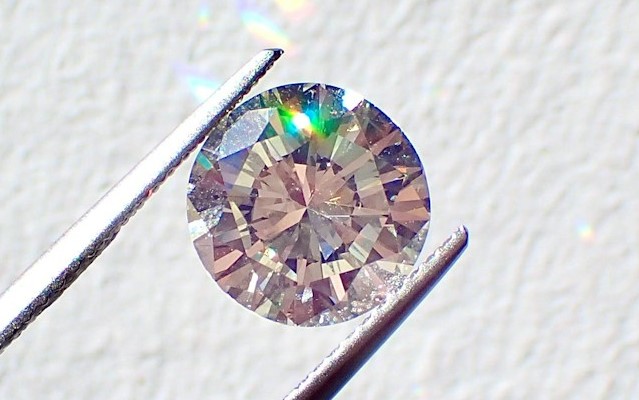Can the industrial-scale carbon sequestration required to rescue humanity from its alleged environmental ruin be achieved by the mass production of synthetic diamonds? Lab-grown diamonds — composed of pure carbon crystallized in an isotropic 3D form — can sequester the carbon employed forever, converting it from a planet-destroying liability to a sparkling asset.
Will this conquer carbon forever while providing universal wealth to all?
Artificial diamonds at scale will transform “deadly” carbon dioxide into life-giving oxygen by splitting off the two oxygen atoms, freeing the carbon for decorative jewelry or perhaps a new world currency to replace paper fiats. Virtue-signaling, climate-saving diamonds that would make Liberace blush can be displayed as ubiquitously as bead necklaces at Mardi Gras.
Carbon Fashionable Again
Should diamonds become too plentiful for fashion applications alone, they could be used as manufacturing substrates, ground into powder perhaps for concrete, paving, or other construction uses. Diamond-studded tires on diamond-studded roadways would revolutionize road safety, especially in wintertime. Diamond powder or crystals could similarly be adapted to replace petroleum-dependent steel or coal-energized aluminum: Cars molded from diamond-plated shells would sparkle and shine down the road, taking their carbon cargo with them to the landfill. Diamond-rich cement could imbue concrete pads and skyscrapers with unprecedented strength.
Diamond sequestration of carbon may prove to be mankind’s best climatological friend. Carbon supposedly sequestered in forests is potentially released when the trees die or are harvested. Carbon scrubbers employ caustic chemicals to precipitate carbon into a liquid, pumped underground where it can easily escape back into the atmosphere. Carbon sequestered in healthy soils is released when the ground is tilled. But synthetic diamond sequestration is forever!
Diamond Deniers
Detractors will doubtless point to the high energy costs and problems of scale to convert unlimited amounts of carbon dioxide into priceless rocks, but such cynical sneering is unwarranted. If logistical impossibility was ever a shortcoming for technological boondoggles, the push for synthetic meat (“cultured,” just like synthetic diamonds) would never have launched: The industry faces insurmountable obstacles of cost and scale, but venture capitalists have lined up to fund the fantasy. So, too, have visionary enterprises crafted ambitious plans to populate Mars with spaceships and new villages, ignoring environmental costs or feasibility; to create fusion reactors that require astronomical amounts of energy to burp out a small flash of light; and to manufacture solar panels and EVs that create far more pollution than they prevent. Heck, America’s ethanol industry is a farce that keeps on fleecing. At least synthetic diamonds won’t drive up corn prices for the poor and reward destructive abuses of farmland!
Saving the World With Precious Gems
True, free diamonds for all might cause some economic turmoil. Rampant diamond deflation would fuel diamond-currency inflation and expose the very idea of universal income as folly. Yet surely an economic collapse occasioned by the world-saving monetization of carbon would be worth the price of averting climate apocalypse. As people wheelbarrowed mounds of synthetic diamonds to pay for their favorite fast food at the drive-through, they might get only a minuscule “happy meal” but could take solace in saving the world.
Free diamonds for all, while saving the world from annihilation! If only Bill Gates could patent synthetic diamonds, humanity might have a chance at climate and monetary salvation. Compared to synthetic meats and soybeans genetically spliced with swine, surely sequestering carbon in synthetic diamonds to spare the planet is a modest proposal.
